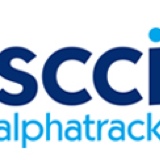"Safety doesn't happen by accident... so let's take a moment to plan for it!"
-
Location
-
Customer Reference
-
Conducted on
-
Prepared by
-
Short Description of the Job example TRR/Cabling internal install Survey
Point of Work Risk Assessment- Part 1- Before you start Work
-
I declare that I am currently fit to undertake the tasks outlined in this risk assessment. I am not aware of any physical or mental health conditions that may impair my ability to work safely and effectively. I have not consumed any substances that may affect my judgment or coordination. All members of team to sign please.
-
Do you have the right tools for the job?
-
Are tools that you need in working order and in Calibration date?
-
Do you have the right documentation for the job?
-
Do you have the right PPE for the job? PPE minimum requirements are <br>HI-Vis<br>Safety Boots <br>Gloves<br>Hard Hat<br>Eye Protection <br>Trousers
-
Is equipment use for working at height inspected? Has it got an in date Tag?
-
If you have answered 'NO' to any of the above, take the required action or report it to the office.
Point of Work Risk Assessment- Part 2- Hazard Identification
-
IMPORTANT: If you tick a box, you MUST provide details in the "Notes" section about the additional control measures you will put in place before work begins. This ensures the hazard is properly managed.
Example:
✅ [✓] Working at height (using a ladder)
Notes:
Hazard: Falling from height while accessing [location] using a ladder.
Additional Controls:
Ladder will be inspected for defects before use.
Ladder will be secured at the top and base by [method].
The area around the ladder will be cordoned off to prevent collisions.
A second worker will be present to foot the ladder and provide assistance.
Why this is important:
This instruction emphasises the action required when a hazard is identified. It makes it clear that ticking "yes" means:
Acknowledgement: You recognize the hazard and its potential risk.
Responsibility: You are taking ownership of implementing necessary controls.
Action: You will take specific steps to mitigate the risk before starting the work.
This helps to ensure that the POWRA is not just a checklist exercise, but a proactive tool for managing workplace safety. -
Slip, Trips or Falls
-
Falls from Height
-
Chemicals
-
Heat/Fire/Explosion
-
Asphyxiation
-
Asbestos
-
Manual Handling
-
Vehicles
-
Confined Space
-
Dust/Fumes
-
Noise/Vibration
-
Electricity
-
Poor Lighting
-
Adverse Weather
-
Risk to others from your work
-
Others (specify)
Operative Sign Off
-
This is a record of a point of work survey conducted for the above job: all control measures have been put into place before i started the job, all workers names to be listed
-
Name
-
Signature
-
Date & Time
End of Job Review
-
Has the work created any new hazards?
-
Comments
-
If you have answered YES to either of these questions, tell your Manager.










